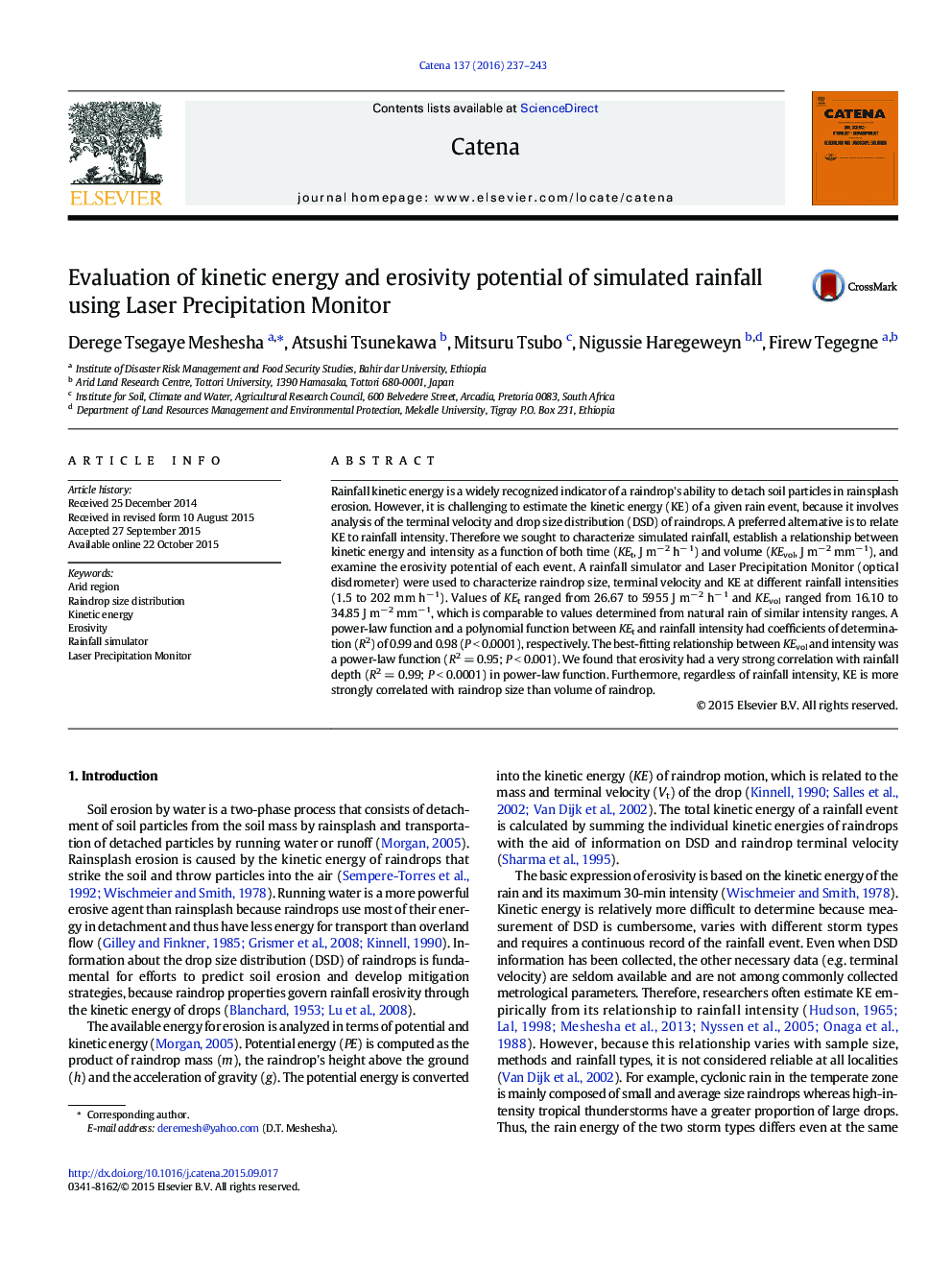| Article ID | Journal | Published Year | Pages | File Type |
|---|---|---|---|---|
| 6407962 | CATENA | 2016 | 7 Pages |
â¢We used simulated rainfall and optical disdrometer.â¢Strong relationship between intensity and kinetic energy is obtained.â¢We found fairly good relationship between rainfall erosivity and depth.â¢Kinetic energy is strongly matched with rain drop size than drop volume.
Rainfall kinetic energy is a widely recognized indicator of a raindrop's ability to detach soil particles in rainsplash erosion. However, it is challenging to estimate the kinetic energy (KE) of a given rain event, because it involves analysis of the terminal velocity and drop size distribution (DSD) of raindrops. A preferred alternative is to relate KE to rainfall intensity. Therefore we sought to characterize simulated rainfall, establish a relationship between kinetic energy and intensity as a function of both time (KEt, J mâ 2 hâ 1) and volume (KEvol, J mâ 2 mmâ 1), and examine the erosivity potential of each event. A rainfall simulator and Laser Precipitation Monitor (optical disdrometer) were used to characterize raindrop size, terminal velocity and KE at different rainfall intensities (1.5 to 202 mm hâ 1). Values of KEt ranged from 26.67 to 5955 J mâ 2 hâ 1 and KEvol ranged from 16.10 to 34.85 J mâ 2 mmâ 1, which is comparable to values determined from natural rain of similar intensity ranges. A power-law function and a polynomial function between KEt and rainfall intensity had coefficients of determination (R2) of 0.99 and 0.98 (P < 0.0001), respectively. The best-fitting relationship between KEvol and intensity was a power-law function (R2 = 0.95; P < 0.001). We found that erosivity had a very strong correlation with rainfall depth (R2 = 0.99; P < 0.0001) in power-law function. Furthermore, regardless of rainfall intensity, KE is more strongly correlated with raindrop size than volume of raindrop.
